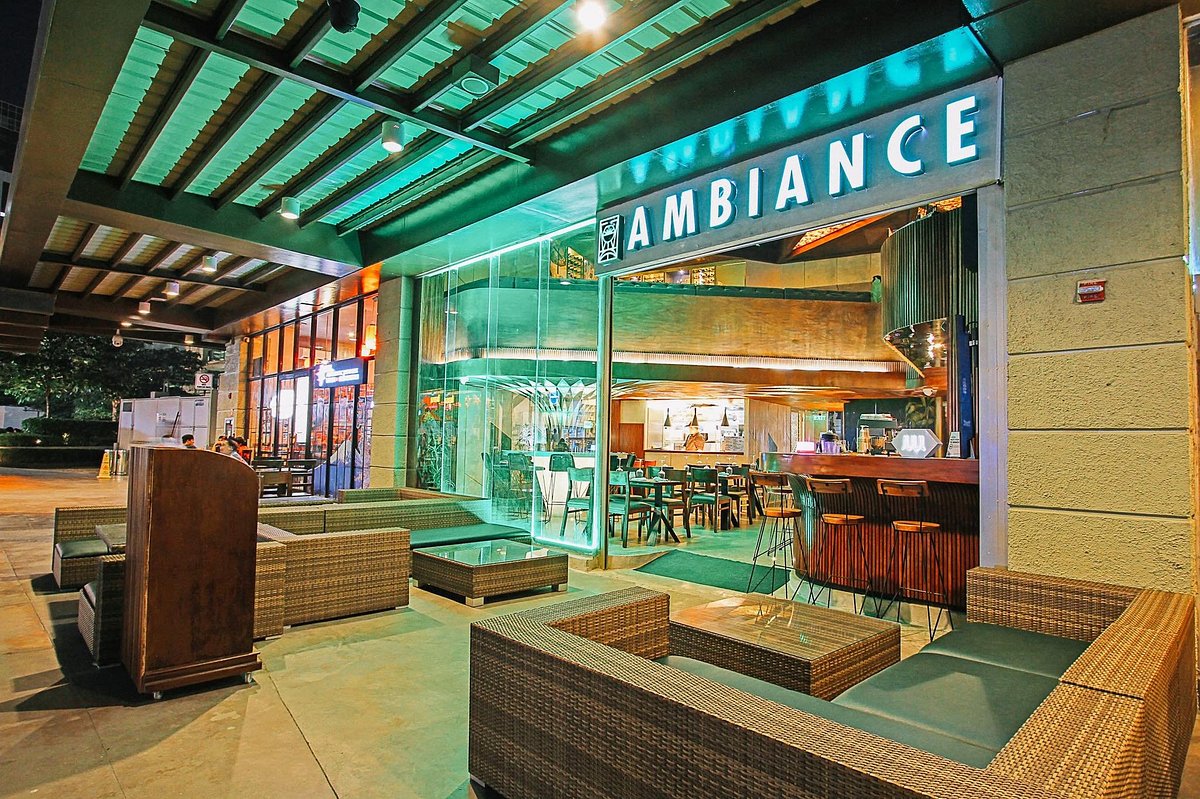Romantic Restaurants Islamabad: Suitable Dining Destinations for Couples
Savor Genuine Oriental Food With a Pan-Asian Spin for a Culinary Adventure
Starting a culinary journey via genuine Eastern food, boosted with a Pan-Asian spin, supplies a special possibility to check out the abundant tapestry of flavors that specify the area's varied culinary practices. This experience invites you to appreciate the charming equilibrium of preferences-- pleasant, salty, spicy, and sour-- balanced by aromatic natural herbs and flavors. Picture the innovative combination of Thai curry and ramen or the unanticipated pleasure of sushi burritos. As you ponder these enticing dishes, take into consideration the social stories and historical influences that form them, each bite supplying a tale waiting to be found.

Exploring Pan-Asian Tastes
In the world of worldwide gastronomy, Pan-Asian food sticks out for its impressive diversity and the unified interaction of tastes from different Eastern cultures. This culinary technique celebrates the rich practices and special ingredients discovered across the continent, developing a tapestry of tastes that is both fascinating and satisfying. Key to Pan-Asian food is its ability to balance contrasting flavors-- sweet, salted, spicy, and sour-- while highlighting the freshness and quality of each ingredient.
From the umami-rich soy sauce of Japan to the intense chili peppers of Thailand, Pan-Asian cuisine provides a considerable scheme of tastes. These components are usually combined in inventive ways, boosting recipes with layers of intricacy. As an example, making use of aromatic natural herbs such as lemongrass and cilantro, usual in Vietnamese and Thai cuisine, adds a refreshing brightness to meals, while the incorporation of coconut milk supplies a luscious, abundant texture.
The emphasis on fresh produce and fragrant seasonings makes certain that each dish is not just a banquet for the palate but also for the detects. Pan-Asian cuisine welcomes restaurants to embark on a culinary trip, exploring the substantial and varied landscapes of Asian gastronomy with every bite.
Fusion Dishes to Try
While Pan-Asian cuisine is celebrated for its typical tastes, the modern cooking landscape is increasingly embracing combination dishes that mix these classic components with influences from various other regions. This innovative strategy not only honors the rich heritage of Eastern cookeries however likewise presents novel preference experiences that appeal to contemporary tastes.
A prime example of such a blend dish is the Korean-Mexican taco, where seasoned bulgogi beef is wrapped in a cozy tortilla, covered with kimchi and a spicy gochujang-infused salsa. This mix marries the vibrant, full-flavored tastes of Korea with the dynamic, fresh components of Mexican cuisine. In a similar way, sushi burritos have actually acquired appeal, integrating the fragile artistry of Japanese sushi with the passionate, hand-held ease of a burrito, typically including blend components like tempura shrimp and avocado with a drizzle of wasabi mayo.
Another notable meal is Thai curry ramen, which instills the velvety, aromatic seasonings of Thai curry into the soothing brew of standard Japanese ramen, developing an unified mix that tantalizes the senses. These blend meals prolong beyond mere novelty; they stand for a culinary dialogue between societies, urging expedition and technology in the world of Pan-Asian food.
Essential Active Ingredients and Seasonings
To really value Pan-Asian food, one must comprehend the essential components and flavors that develop its structure. This varied cooking style attracts from an abundant tapestry of Eastern customs, utilizing an unified blend of textures and tastes. Key ingredients consist of soy sauce, fish sauce, and oyster sauce, which give a tasty umami deepness necessary to Eastern recipes. Complementary to these are rice vinegar and mirin, lending a fragile level of acidity and sweetness.
Aromatic components are crucial, with lemongrass, ginger, and garlic being ubiquitous throughout different Pan-Asian dishes. These active ingredients provide an aromatic base that improves the intricacy of flavors. Spices such as celebrity anise, cardamom, and cinnamon introduce heat and personality, resembling impacts from areas like China and India.

Food Preparation Techniques and Tips
Grasping the art of Pan-Asian food calls for familiarity with its unique cooking techniques, each adding to the dynamic tapestry of flavors this culinary custom is commemorated for. Central to these techniques is the stir-fry, a rapid click to find out more cooking method that protects the dietary stability and brilliant colors of ingredients. Utilizing a wok, the stir-fry technique permits for also heat distribution, essential for attaining the particular appearance and taste balance of Pan-Asian dishes.
Another basic strategy is steaming, especially prevalent in Chinese food. This gentle technique maintains the all-natural tastes and straight from the source nutrients of ingredients, making it ideal for seafood and veggies. Dumplings, a cherished staple, usually gain from steaming, resulting in soft, succulent appearances.
Cooking, likewise indispensable, gives great smoky midsts to dishes such as Korean bulgogi or Japanese yakitori (pan asian dining Islamabad). This method often entails marinading active ingredients, enabling flavors to permeate deeply prior to cooking over an open fire or hot plate
Lastly, mastering the art of balancing flavors-- pleasant, sour, salted, bitter, and umami-- is essential. Appropriately layering these elements can boost a dish from regular to remarkable, providing a complex and pleasing culinary experience that embodies the essence of Pan-Asian cuisine.
Eating Experiences Worldwide
Across the globe, Pan-Asian cuisine uses an unequaled dining experience, commemorated for its rich tapestry of tastes and lively discussions. This cooking sensation has gone beyond cultural borders, recording the hearts and palates of food lovers worldwide. In multicultural cities fresh York, London, and Sydney, Pan-Asian restaurants act as melting pots where cooking customs from Thailand, Japan, China, and past converge, giving diners with a diverse mix of meals that highlight the area's diversity.
The global charm of Pan-Asian cuisine depends on its capability to provide both authenticity and development. Chefs masterfully wed typical active ingredients such as lemongrass, soy sauce, and miso with contemporary techniques, resulting in recipes that are both refreshingly brand-new and acquainted. This blend enables diners to start a culinary journey that respects heritage while accepting modernity.
Moreover, eating experiences are elevated through attentively created environments that mirror the principles of Pan-Asian looks. From minimal Japanese-inspired interiors to dynamic Thai-themed rooms, each dining establishment provides an unique ambiance that matches the culinary offerings. As a result, patrons are not just eating a dish but partaking in a cultural experience, making Pan-Asian eating a truly worldwide sensation.
Verdict
The exploration of Pan-Asian cuisine offers a profound their explanation understanding of the elaborate interplay of flavors and culinary traditions throughout Asia. By welcoming fusion recipes such as Thai curry ramen and sushi burritos, the cooking trip not just highlights the flexibility of typical ingredients but also showcases ingenious modern-day techniques. This gastronomic experience, improved by crucial flavors and cooking methods, provides an unique opportunity to value the social variety and cooking virtuosity that specify Pan-Asian cuisine on a global range.
Embarking on a cooking trip through genuine Asian food, boosted with a Pan-Asian twist, uses an unique opportunity to check out the abundant tapestry of tastes that specify the area's varied cooking practices.In the world of global gastronomy, Pan-Asian food stands out for its amazing variety and the unified interaction of tastes from various Asian societies. Key to Pan-Asian food is its ability to balance different flavors-- sweet, salty, spicy, and sour-- while highlighting the freshness and quality of each active ingredient.
